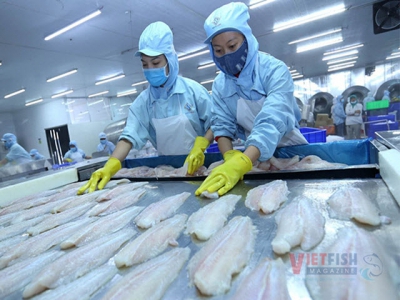Vietnam to tighten the control of exceeding Chlorate level in pangasius

The National Agro-Forestry-Fisheries Quality Assurance Department (NAFIQAD) has just issued the official document no.1988/QLCL-CL1 about the EU’s warning about Chlorate level in the Vietnamese pangasius.
An article posted in some websites of Germany on 17 October with title “Withdraw Vietnamese panasius from Edeka and Marktkauf due to high intake of Chlorate” was calling for the control of the exceeding Chlorate level in the food to protect the consumers’ health, according to NAFIQAD.
Beside this, the Rapid Alert System for Food and Feed (RASFF)by the Directorate-General for Health & Consumers of the European Commission gave the official warning about two cargos of frozen pangasius fillet imported from Vietnam related to the Chlorate residue.
The Decision no.2008/865/EC issued by the EC since 2008 has enabled the Chlorate intake plant protection drugs to be prohibited. Even though the EC does not stipulate the maximum residue level (MRL) of Chlorate in the regulation no.396/2005, the default MRL for any plant protection drug without being regulated the MRL must be 0.01 mg/kg.
Of Eu, Germany is the third single buyer of Vietnamese pangasius with the import value of the first nine months of 2019 reaching US$22.9 million, up 32.5% from last year. This gave Germany the highest growth of Vietnamese pangasius purchasing in the first nine months of 2019 among the EU countries. Thus, the warning from Germany and EU about Chlorate residue in some shipments of Vietnamese pangasius has caused major concern to the country.
According to Assistant Professor and Dr. Trương QuốcPhú from Cần Thơ University, Chlorine is used for water treatment in aquaculture, especially in black tiger shrimp ponds and pangasius extensive farms. VASEP’s General Secretary Trương Đình Hòe said the Chlorine is used to sterilize the processing equipment in pangasius facilities.
With an aim to control the Chlorate residue in production and processing of seafood exported to the EU market, avoid other warnings in the future, and reduce the risk of spillover effect among the EU countries, NAFIQAD is imposing essential requirements on the seafood processors as below:
The Chlorine level must not exceed 1 mg/L. The Chlorate level must not exceed 0.7 mg/L in the seafood exported to EU in accordance with the WHO’s guidelines for drinking water quality. Companies are required to review the quality management and Chlorate hazard identification program to control the hazard in the products exported to EU (such as SOP for the food safety of processing water, SSOP for sanitation and sterilization of the surface where products directly approach, examine the Chlorine and Chlorate residue in the water used for processing, glazing and sanitation). Companies must take samples for testing the Chlorate residue of semi-finished products and products.
Hòe said it is unknown when the Chlorate intake happened for the two shipments of pangasius that were warned by the EU authority. However, the domestic pangasius processors must enhance their control in using Chlorine in the sanitation and sterilization of facilities and equipment without making Chlorate approach the pangasius products.
Related news
 The Future of Sustainable Aquaculture with Innovative Technology and Practices
The Future of Sustainable Aquaculture with Innovative Technology and Practices Aquaculture is the world’s fastest growing food industry. It should come as no surprise as it is taxed with the responsibility of feeding a rapidly growing
 Exports of shrimp to Taiwan quite stable
Exports of shrimp to Taiwan quite stable Taiwan (China) is the eighth largest shrimp import market of Vietnam, accounting for 1.7 percent of Vietnam's total shrimp export value.
 State agencies try to rescue seafood exports to China
State agencies try to rescue seafood exports to China Vietnamese export companies are seeing their seafood products stuck on the way to China at Mong Cai border gate in Quang Ninh province.